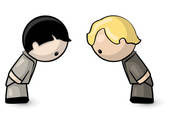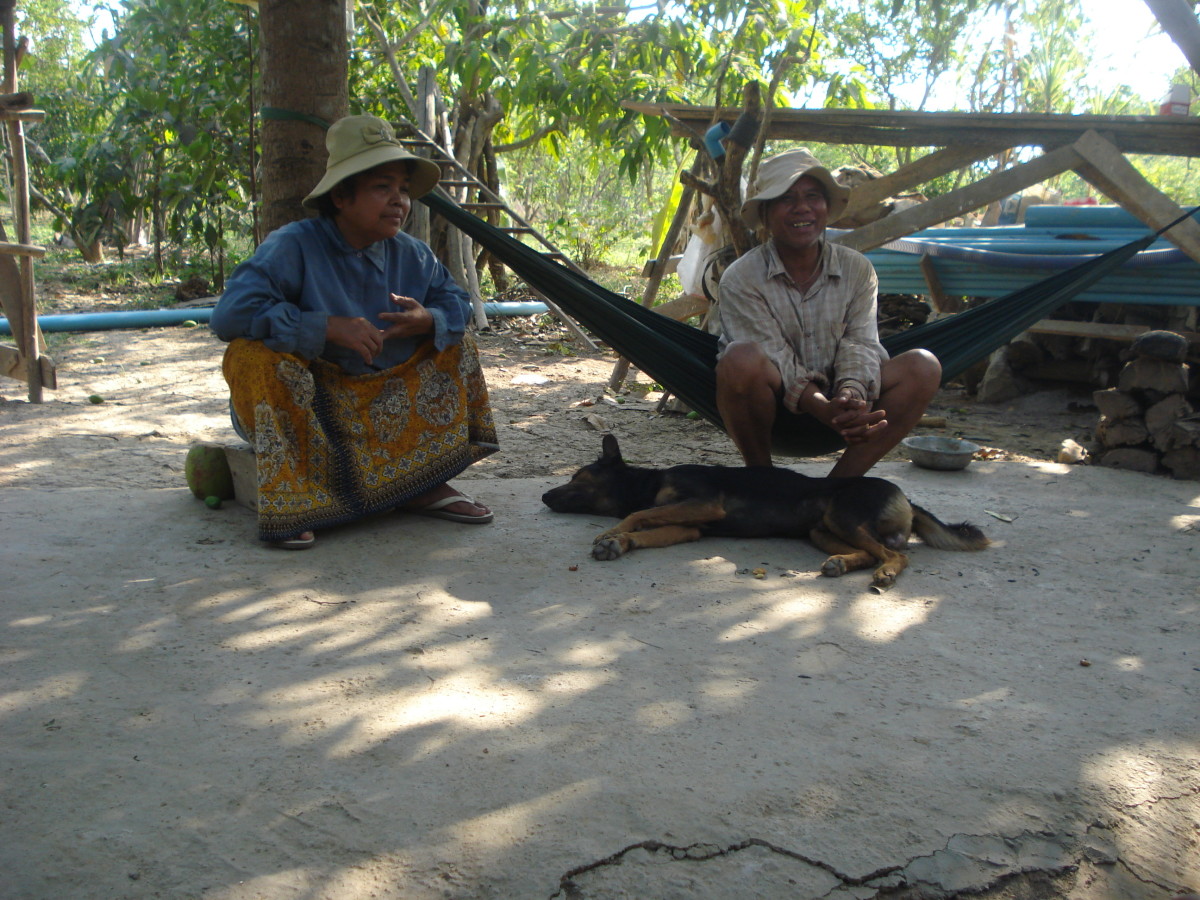The Philippines: Where East Meets West

Pearl of the Orient Seas
I was born and raised in the Southeastern part of ASIA, in Manila particularly. And for those of you who went to your world geography classes in school and was awake for most of it, you would know that it is in the Philippine Islands. In case you do not know where to find the Philippines in a globe then this article is written specifically for you.
Now for many, many years now I have been living in the other side of the Pacific Ocean over here in sunny Southern California, where just as in Manila there are lots of people from all over the world. Being a melting pot for different cultures both locations are places where confusion occurs when the East (people from the Orient) meets the West (people from the Western Hemisphere) and vice versa especially if that happens for the first few times.
And so I have decided to write a short narrative and an explanation about my experiences about funny episodes I have seen and experienced so far, when the East meets the West and vice versa.
Asian Myths
Let me start by saying that because there are lots and lots of people in both the West and the East who are sheltered or who haven’t travelled far from where they were born and raised in, they only have to rely on their instincts, or on what they have heard about certain races and cultures and of course all these are not entirely true. And even if you have seen one, two or a few people from a certain culture talk or act a certain way it does not necessarily mean that it is generally how it is for everyone who belongs to that culture. But then again it could and so we might as well go through what might be true, or what might be partly true and what are entirely not true at all.
Asians: Bad Drivers?
FIRSTLY, people think that Asian drivers are the worst of the lot. Granted I am Asian, but for this view, I would want to limit this general term "Asian" to those who are either Chinese, Japanese, Vietnamese, Korean and those in the same family. I am not any of those, I am Filipino. For some of you, Filipino is the same as Philippo, Pilipino, Pinoy, Flip, Filippino and other similar variants, If you want to call us Asian then, call us the Latino Asian, the Black Asian or the Pacific Islander Asian but please not just Asian. How can we be Asian if our first name could be James and out last name could be Chavez-Hernandez-Marquez-Velasquez-Ramirez.
Okay, going back to Asians being the worst drivers, I do not entirely agree with this view but we should all remember that to any other culture, your driving also stinks. C’mon we cannot just generalize that all Asian drivers are bad drivers. What if some of them drive 15 mph on clean, clear surface streets with a 40 mph speed limit? What if they tap on their brakes every 50 meters or so? What if they stop at a four-way stop and feels like they are waiting for the New Year to proceed? And what if they take a 15-point turn to park their Mercedes Benzes or their Lexuses or their other high-end car-reses? Sorry got carried away with the eseses.
But these are by far not the worse examples of bad or unsafe driving I have seen in the streets of Los Angeles. And at least, when they do manage to hit you however slow they drive, most of the time they will stop, come down, sincerely apologize and even bow a few times and maybe ask for your forgiveness and they have car insurance that can take care of the damage on your end.
No, I don’t believe that Asians are the worse drivers out there. We just have to admit that they are out there amongst us, just like those who zoom by at 65 mph at the school zones snaking their way ahead in between cars that go 40 like they are in the INDY 500, those who drive with fifteen people inside a minivan without seatbelts or carseats, and those who do not stop for pedestrians, crosswalks or stop and red lights, and those who multi-task by putting on eye make-up, texting on their iphone, listening to their ipod, typing in their destination on their GPS, biting on a Bacon-Mushroom Melt, holding a 32 ounce soda cup between their legs and holding down Fifi or whatever their Chihuahuas' name is with their left foot, all at the same time while moving faster and faster over the speed the limit. No, most Asians do not do any of these.
Bowing
SECONDLY, for certain Oriental cultures bowing as we now know is an act of apology. But it can also be used as an outward act of giving thanks, or acknowledging you or just a friendly silent “Hello.”, “Good morning.” or “How are you?”.
If you are not from cultures who are used to this kind of thing, just smile back, wave, say “Hi.”, “Thank you.”, “How are you?” or just give a friendly nod. If you’re not in Rome don’t do as the Romans do.
For if you keep bowing too, the other person might just go on bowing and sometimes go lower than yours and you will just be doing the bowing thing the whole day.

Non-Verbal Communications
THIRDLY, Asians, Filipinos particularly are so used to non-verbal communication. And for them it is not a sign of disrespect or anything like that. Many are just soft-spoken and were trained to be seen and not heard. Besides, that is a good thing to do if you know your English is not so good. Less talk, less mistakes.
And so Filipinos as well as for a few other Oriental cultures, who aren’t used to being greeted with a “What’s up?” “How are you doin?” “What’s happenin?” Do not be surprised if they just smiled back, or if they nod, or bowed, or do some other gesture with their hand or fingers or their eyes, nose or lips. Yes, all these are non-verbal communication techniques perfected by the Filipinos, (especially because they had to do guerrilla warfare against the Spaniards, the Americans, the Japanese and now the Chinese Businessmen for 500 years) so be aware that they can communicate with one another even if you do not hear anything.
Saying Hello Once is Enough
FOURTHLY, Filipinos and other Asians I supposed do not have time to answer “What’s up?” or questions like that from every single person they meet and sometimes who ask them that question four, five, six, seven, eight or more times a day. Like, what’s up with that? Do we all look the same to you Westerners or is it that hard to distinguish us from other Asians that you have to ask us the same question each time we meet in the hallway or over 10 times in an eight hour work day? As in, I was fine when I got here, but you asking me an 8th time, just ain’t right. Once a day is more than enough, really. Really.
ESL
FIFTH. Filipinos are the third largest English Speaking Nation in the whole world. We have the same US Public School System in place, most subjects are taught in English and for a relatively poorer country surprisingly enough, majority of the people go to school even all the way to college and the university where almost all if not all subjects are taught in English. Mass media, billboards, signages, road and street signs are in English. But Filipino English might not always be the same as American English. And especially it is not the same as British English, Australian English and any other English. And that goes without saying with the English of other Asian countries.
For a Westerner who haven’t travelled very far from their birthplaces, you must listen very attentively at any Filipino or Asian Speaker, for sometimes they are already speaking in English and you still do not know it yet. And that goes the same with Westerners, if you are speaking to a person from the Far East, especially one who is having a noticeably hard time speaking English, try to speak slower than normal, not too slow though but at least pause at words that you wish to emphasize, avoid slang or colloquial words but use more formal and conventional words and phrases and enunciate and differentiate each syllable as you speak.
But do not speak LOUDER than normal, there is nothing wrong with our ears, it’s the tongues that sometimes get in the way. Okay, I know it’s hard to speak slower than normal because you seem to just roll your tongues naturally and comfortably around every syllable but most times they come out all having the same sound or so joined together it is hard for some Asians to get it all.
And it is probably the reason why some Asians speak so fast themselves (like five words per second) because they probably want to give you guys a dose of your own medicine. And with that killer accent too so that’s double bogey for you. (Like what happened to Tiger at the Augusta, way to go Mickelson).
Okay, where were we? SIXTH, there are certain Filipino English words and phrases that only a Filipino born person would be able to understand. And here are a few of them.
Lost In Translation
What They Will Normally Say
| What They Really Meant
|
|---|---|
Please fall in line.
| Please get in line.
|
Please kill the lights.
| Please turn off the light switch.
|
Please turn on the aircon.
| Please turn on the AC.
|
I’ll be with you by and by.
| I’ll be with you shortly.
|
For a while please.
| Hold on for a while please.
|
Please, may I kindly help you, please.
| How can I help you?
|
Where is the CR?
| Where can I find the restroom?
|
or bathroom or comfort room?
| |
Can I fax you or Can I fax?
| Can I send you a fax message?
|
Eat All You Can.
| All You Can Eat
|
Political Correctness
SEVENTH, do not be surprised if a few of them still do not use politically correct or use offensive terms. That shouldn’t be held against them, for they should be presumed innocent until they are proven guilty of malicious intent. For really how can you expect other cultures to follow your own culture’s political correctness when such rules of rightness were only started of late. It might just mean that these new terminologies and ideas have not yet trickled down to all other cultures.
And that goes the same with Westerners, not every word and every action that you normally do would be considered culturally correct with many Asian people. Remember, when in doubt, less talk, less mistakes, this goes well with less action and movement as well. And the more parts of your body you cover up, the better.
I CAN GO ON AND ON, but I will cover them in a second edition to this lesson in world geography and culture.












